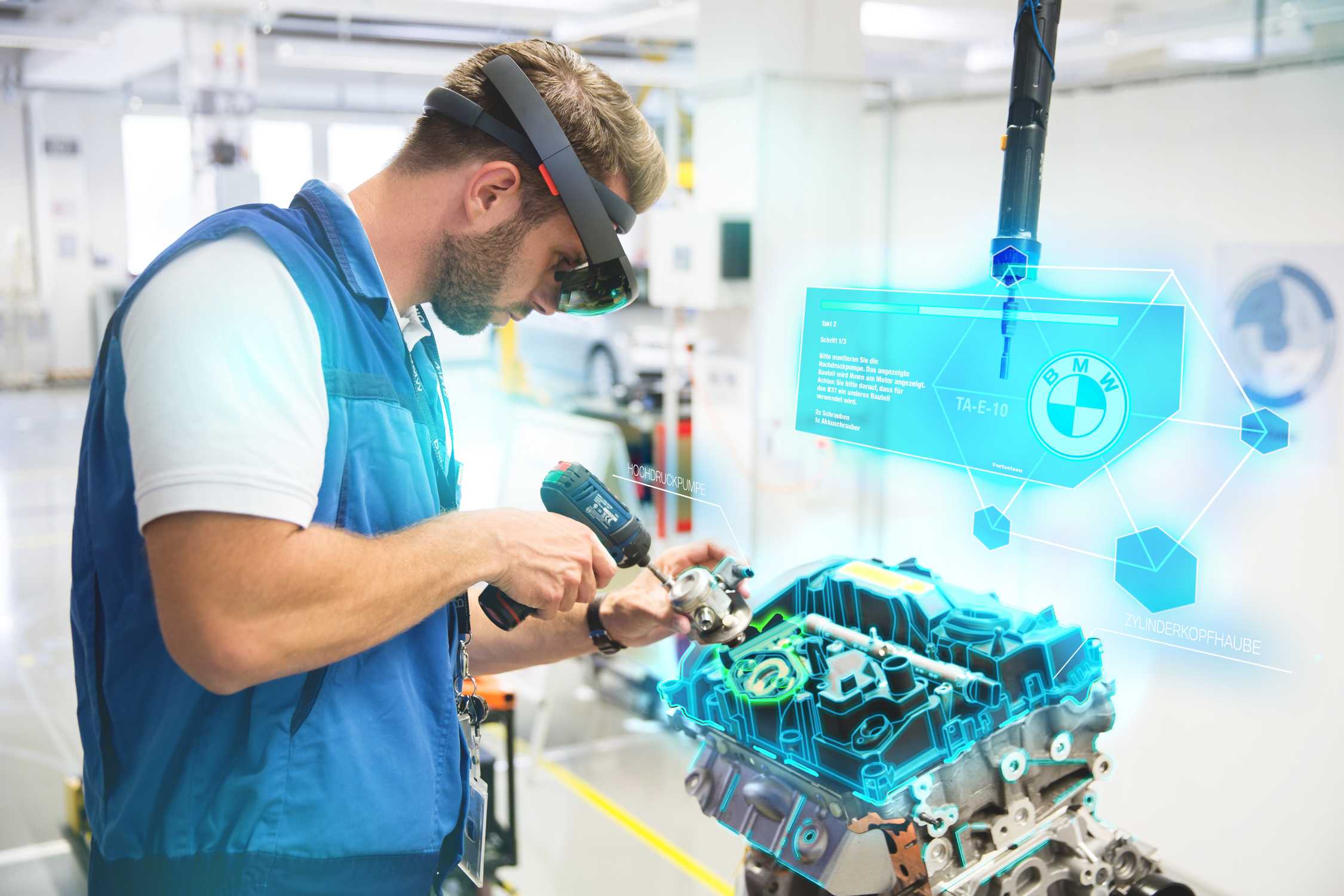Augmented Reality (AR) in training and education provides an innovative and interactive method to learn and practice skills by overlaying digital information onto the real world. Unlike Virtual Reality (VR), which creates a fully immersive virtual environment, AR enhances the physical environment with digital elements such as images, videos, and 3D models, visible through devices like smartphones, tablets, and AR glasses. This blend of real and virtual worlds creates engaging and effective learning experiences, making education more interactive and accessible.
Applications of AR in Training and Education
AR’s versatility allows its application across various educational and training fields, demonstrating its capacity to enrich learning experiences and improve skill acquisition:
1-Medical and Healthcare Training: AR is revolutionizing medical education and training by providing detailed, 3D visualizations of human anatomy and simulating complex medical procedures. This allows students and professionals to practice and understand medical concepts without the need for real cadavers or patients, minimizing risks and ethical concerns.
2-Technical and Mechanical Training: In industries such as manufacturing, automotive, and aviation, AR assists in the training of technicians and engineers. It offers step-by-step guidance during the repair or assembly of machinery, overlaying instructions directly onto the equipment being worked on, which enhances understanding and efficiency.
3-Education: In classroom settings, AR can bring textbooks and educational materials to life. Through AR apps, students can visualize complex scientific concepts, historical events, or geographic features, creating an immersive learning environment that fosters deeper understanding and retention of information.
4-Corporate Training: AR is used in corporate environments for training employees in various scenarios ranging from customer service to compliance training. It can simulate real-life situations for employees to practice their responses or learn new policies, ensuring they are better prepared for their roles.
5-Safety and Emergency Preparedness: AR simulates emergency scenarios in a safe environment, allowing individuals to practice their response to fires, natural disasters, or other emergencies. This application is crucial for training first responders, as well as for general safety training in workplaces and schools.
6-Language Learning and Cultural Education: AR offers immersive experiences for language learners, allowing them to interact with virtual objects labeled in the language they are learning or to simulate conversations with native speakers. It can also bring cultural sites and artifacts to life, providing a rich context for learning about history and cultures.
Advantages of AR in Education and Training
1-Engagement: AR creates compelling learning experiences that capture the attention of learners, making education more engaging and enjoyable.
2-Accessibility: With AR, educational content is more accessible, as learners only need a compatible device to interact with digital overlays, breaking down geographical and physical barriers to education.
3-Interactivity: AR’s interactive nature encourages active participation from learners, which is known to improve retention and understanding of the material.
4-Practical Skill Development: By simulating real-world scenarios, AR allows learners to practice and develop practical skills in a risk-free environment, preparing them for real-life applications.
5-Customization and Scalability: AR applications can be tailored to the specific needs of the learner, allowing for personalized learning experiences. They can also be scaled easily to accommodate more users without significant additional costs.
Conclusion
Augmented Reality is transforming the landscape of training and education by providing immersive, interactive, and highly effective learning experiences. As AR technology continues to evolve and become more widespread, its applications in education are expected to grow, offering innovative ways to learn, train, and acquire new skills across a broad spectrum of disciplines. This technology not only makes learning more engaging and accessible but also prepares individuals for the practical application of their knowledge and skills in the real world.
